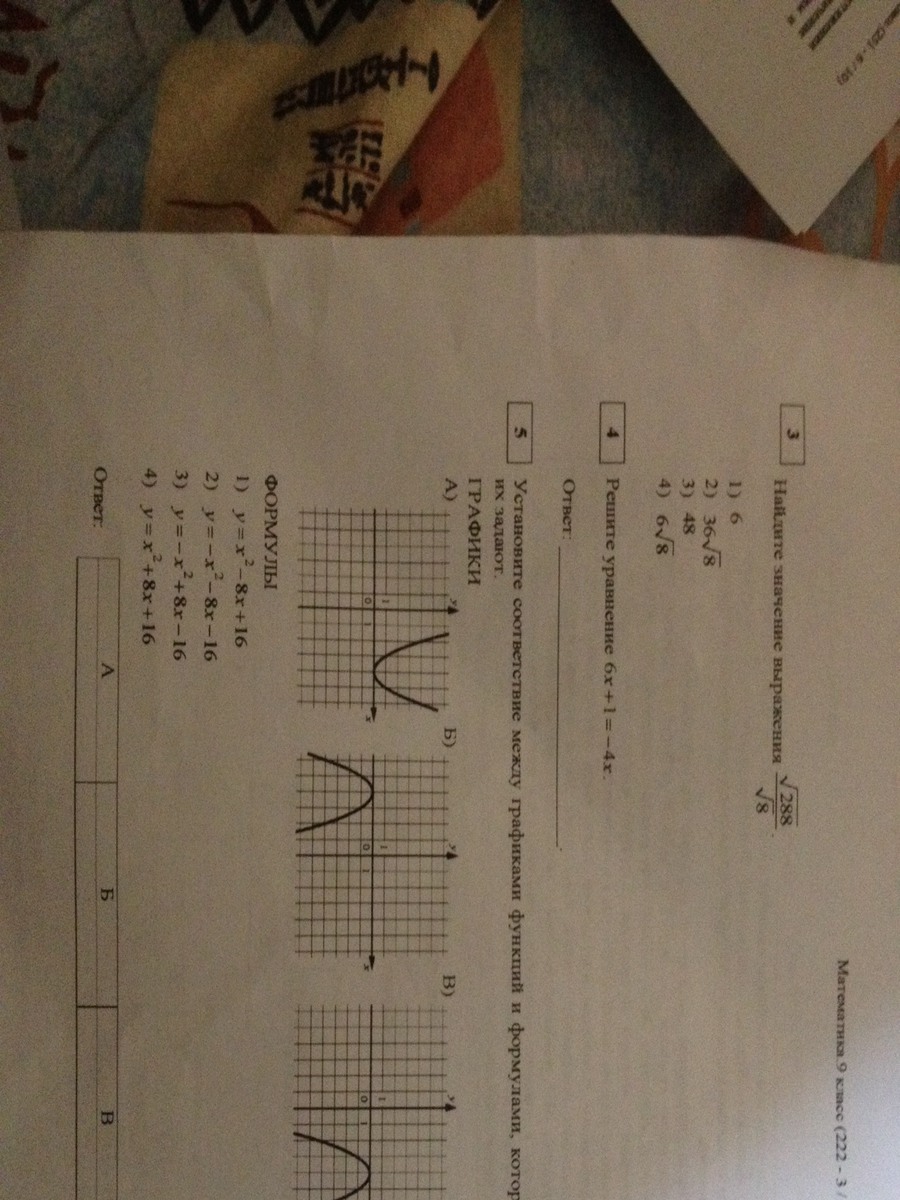Предмет: Алгебра,
автор: ebri
Решите пожалуйста очень нужно
Приложения:

Ответы
Автор ответа:
0
3.1)6
4.6x+1=-4x
6x+4x+1=0
10x=-1
x=-(1÷10)
4.6x+1=-4x
6x+4x+1=0
10x=-1
x=-(1÷10)
Похожие вопросы
Предмет: Английский язык,
автор: Принцесска10000
Предмет: Русский язык,
автор: kirill1s
Предмет: Русский язык,
автор: Prostakfsg
Предмет: Литература,
автор: Nelogi4niy